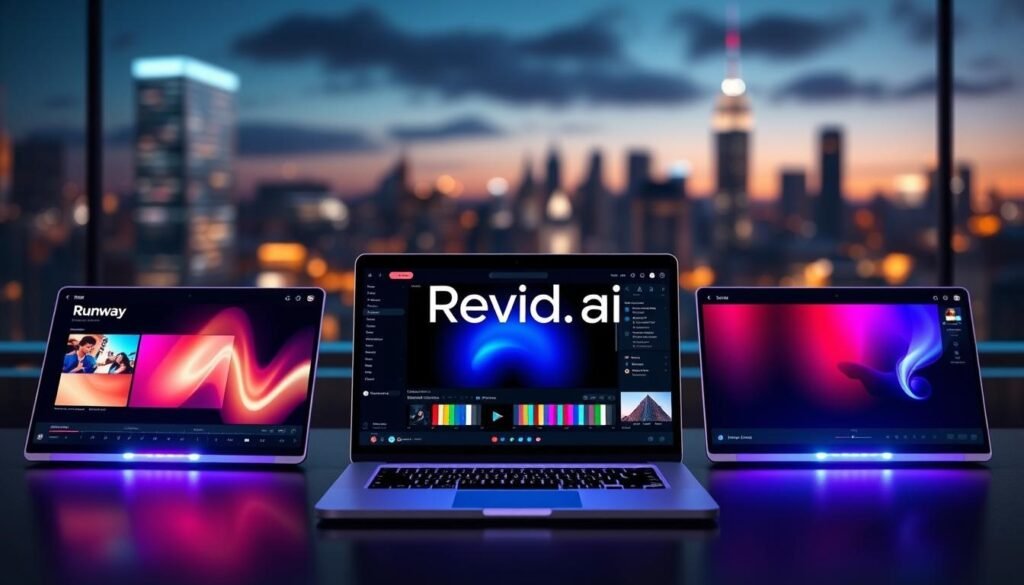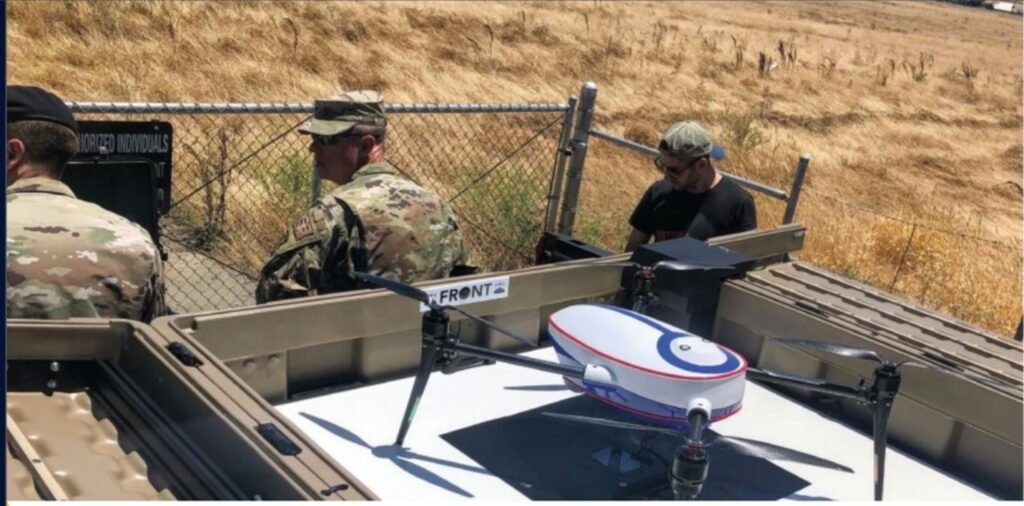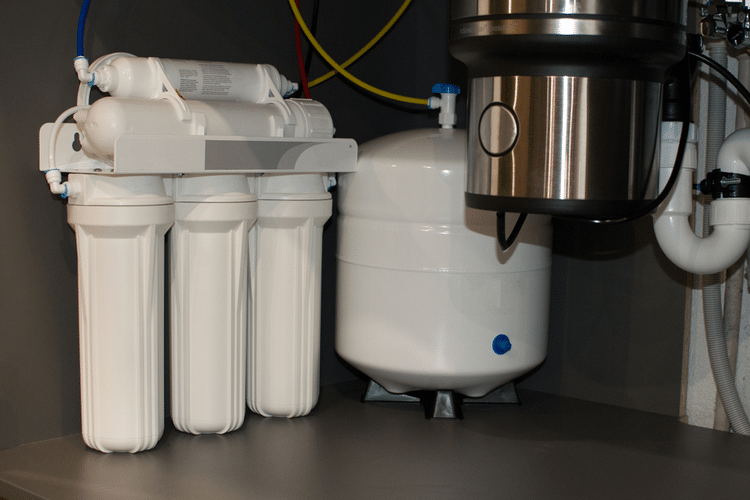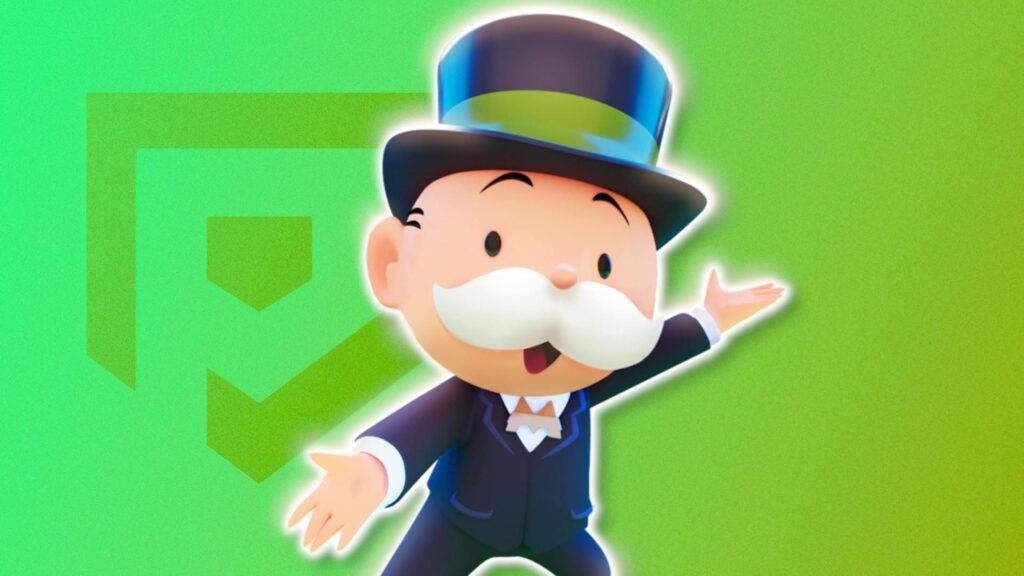The Wild World of Digital Fame – Influencersgonewild
Influencers Gone Wild takes you beyond the perfect posts and into the real, raw moments of digital fame.
Influencers Gone Wild: The Untold Story of Fame, Failure & Going Viral
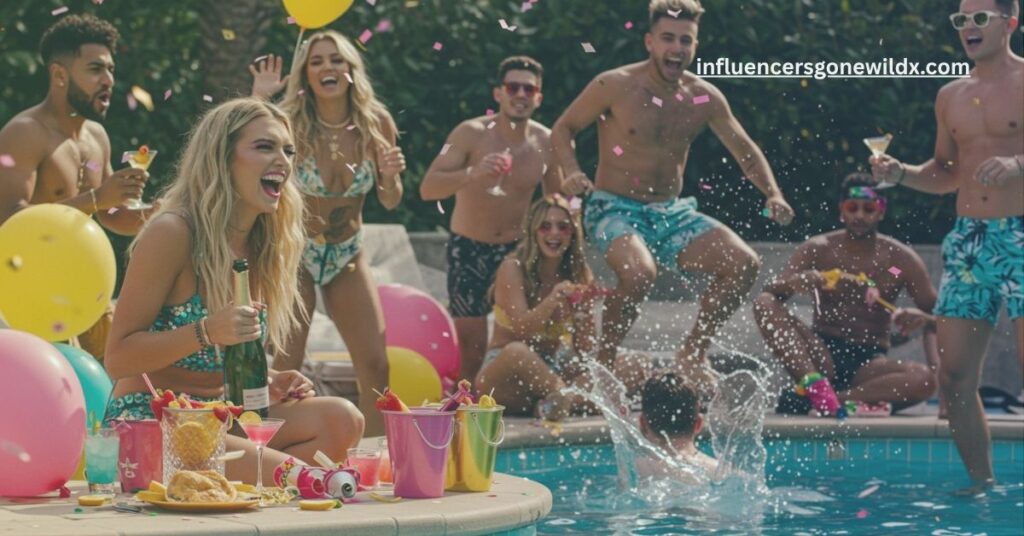
Introduction:
What is InfluencersGoneWild?
InfluencersGoneWild is an online platform that features exclusive content shared by popular influencers, models, and internet personalities. Unlike traditional social media platforms like Instagram or TikTok, this site focuses on more personal and unfiltered material that fans don’t usually get to see elsewhere.
It has become a place where followers can explore behind-the-scenes moments, lifestyle clips, and content that creators often use to promote their premium services or platforms. While some content is free, most links direct users to subscription-based services or private pages where more is shared.
Why It’s Gaining Widespread Attention
The platform has quickly gained popularity due to the increasing demand for uncensored or exclusive influencer content. Many people are curious to see a more unfiltered side of the internet personalities they follow — and InfluencersGoneWild offers exactly that.
Reasons behind its viral growth include:
- Trending posts on Reddit, X (Twitter), and forums
- Creator promotions and word-of-mouth buzz
- Curiosity-driven traffic due to the platform’s edgy and bold vibe
- Rising popularity of direct-to-fan content models
Its open-access format and controversial appeal have made it a hot topic, especially among younger internet users who crave authentic and behind-the-scenes glimpses of their favorite personalities.
The Buzz Behind the Name
The name “InfluencersGoneWild” itself plays a huge role in its internet fame. It’s catchy, provocative, and instantly sparks curiosity. The term suggests influencers showcasing a more carefree, spontaneous, and unfiltered side — which is exactly what draws viewers in.
Its viral potential lies in how it blends modern influencer culture with a bold and rebellious identity. The name sticks in people’s minds, making them want to click, search, and share — which is ideal for any platform looking to grow quickly online.
Background & Evolution
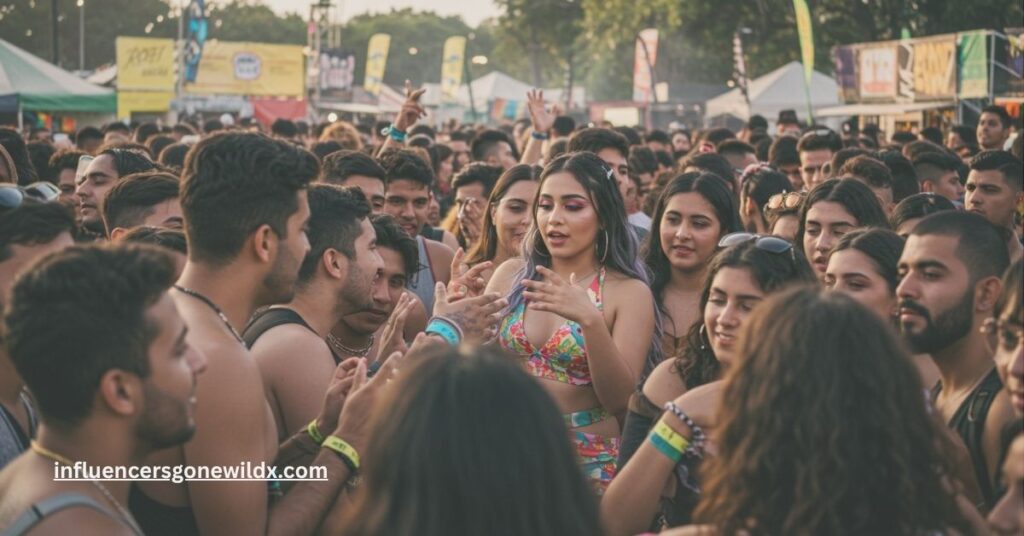
The Origins of the Platform
InfluencersGoneWild began as a low-key website where online communities could gather and view content shared by influencers across various platforms. Initially circulated through Reddit threads and niche forums, it slowly built a dedicated base of users who were eager to find content that was hard to locate elsewhere.
Though the founders remain anonymous, the platform likely started as a fan-curated project that aggregated posts for easier discovery. Over time, it gained momentum and became more structured, with individual creator pages, search functionality, and categorization.
Evolution from Niche to Mainstream
In its early days, the platform catered to a specific audience — fans who wanted access to more personal content from online creators. However, as influencer culture evolved, and creators became more open to sharing content beyond conventional platforms, InfluencersGoneWild gained broader traction.
Many influencers now see the platform as a traffic-driving tool — using it to promote their pages, subscriptions, and fan communities. This shift helped the site transform from a niche archive into a mainstream promotional and discovery platform.
The shift also reflects the changing nature of digital content — where creators are more open about monetization, exclusivity, and authenticity.
Key Milestones in Its Growth
Here are some pivotal points in the platform’s rise:
- 2020: Initial traction through Reddit and online communities
- 2021: Surge in influencer content listings; fans begin using the platform as a discovery tool
- 2022: Website undergoes redesign with enhanced tags, search filters, and creator indexing
- 2023: InfluencersGoneWild becomes a trending term on Google and gains visibility across video reactions and internet reviews
- 2024: Discussions about content sharing ethics bring renewed attention, increasing site traffic even further
Each of these instances has contributed to InfluencersGoneWild’s transformation from a secretive gathering place to a well-known internet brand that receives millions of inquisitive clicks each month.
What Type of Content is Shared?
Categories of Content Available
InfluencersGoneWild hosts a wide range of content that appeals to various interests and audience preferences. While it primarily showcases social media influencers and internet personalities, the platform is known for compiling and categorizing content to make discovery easier for users. Some common categories include:
- Behind-the-Scenes Moments – Candid videos or photos not posted on mainstream social media.
- Lifestyle Clips – Personal routines, gym sessions, travel diaries, etc.
- Modeling Shoots – Professional and amateur shoots shared by influencers themselves.
- User-Favorite Influencers – Pages dedicated to trending personalities with high user engagement.
These categories help users navigate through a large volume of material, making it easier to find specific creators or content types they’re interested in.
Unfiltered vs. Creative Content: What to Expect
One of the main reasons users visit InfluencersGoneWild is the contrast between what’s shared on regular social platforms vs. here. The content featured is often unfiltered, more spontaneous, and creatively expressive.
Here’s a breakdown:
- Unfiltered Content: This may include raw, casual, or bold posts that influencers don’t usually share elsewhere. It’s not necessarily inappropriate — just more open and unrestricted in nature.
- Creative Content: Many influencers use the platform to promote photo series, artistic shoots, stylized videos, or personalized shoutouts meant for their close fanbase or subscribers.
The mix of these two types allows fans to see a more authentic side of the creators, bridging the gap between public persona and private expression.
Top Influencers Featured on the Platform
While InfluencersGoneWild doesn’t officially partner with creators, it has become a known space where popular and emerging influencers are regularly featured — either by fans or through their own indirect promotion.
Some influencer types frequently seen include:
- Fitness Models
- Cosplayers
- Lifestyle Vloggers
- TikTok Stars
- Instagram Influencers with subscription pages
Certain creators consistently dominate searches due to their follower count, content quality, or viral fame. These influencers often gain additional exposure, helping them drive traffic to their premium or social pages.
How Does InfluencersGoneWild Work?
User Interface and Navigation
InfluencersGoneWild keeps its user interface minimalistic and content-first. Upon visiting the homepage, users are greeted with a grid of influencer thumbnails, names, or titles. The design prioritizes:
- Fast browsing
- Keyword-based search
- Categorical filters
- Trending tags or featured pages
Even without a user account, visitors can navigate the site easily. The simple layout ensures people can find what they’re looking for quickly, without excessive pop-ups or slow loading times.
How to Sign Up and Access Content?
Currently, the platform functions more like a content discovery site than a social network, so signing up is not mandatory for browsing. However, certain features may be available only to registered users — such as:
- Bookmarking favorite creators
- Access to comment sections
- Notifications for updates or new uploads
To sign up, users typically need to provide a basic username and email. Some parts of the platform may link out to external sites, where registration or payment might be required to view premium content.
Paid vs. Free Features Explained
InfluencersGoneWild itself does not act as a payment gateway or host premium content behind its own paywall. However, the platform serves as a directory or promotional gateway to other platforms where paid content is hosted (like subscription-based creator pages).
Here’s how the free vs. paid breakdown usually works:
- Free Features:
- Browse thumbnails and public creator pages
- View preview clips or images
- Use filters and search tools
- Paid Features (via external links):
- Full-length content or exclusive posts
- Direct messaging or requests
- Premium series or collections
In essence, the platform operates as a traffic driver — helping creators get discovered and giving fans a preview before subscribing elsewhere.
Famous Cases of “Gone Wild” Moments
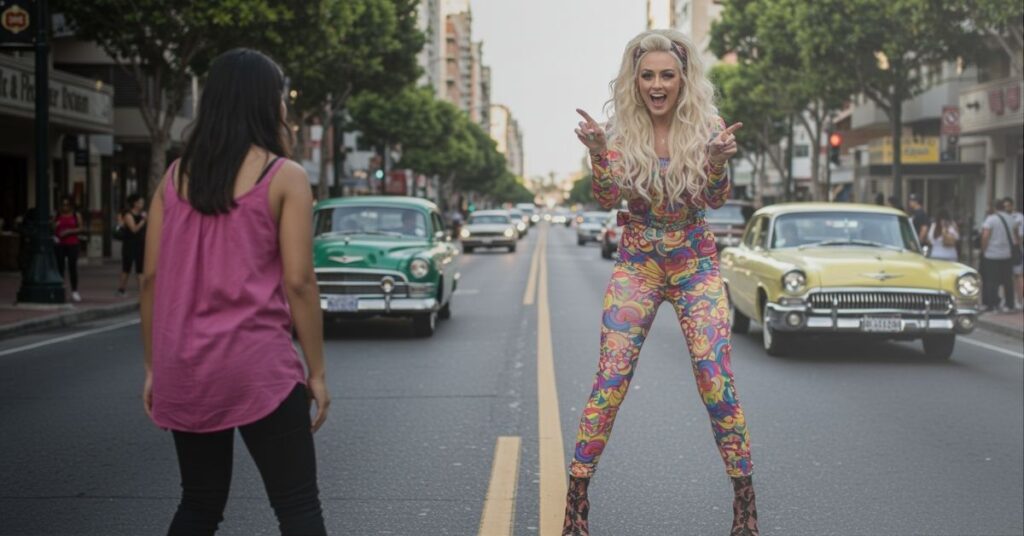
Top 5 Influencer Incidents That Shook the Internet
In the age of social media dominance, influencers are no strangers to controversy. Whether it’s a slip-up on a live stream or a bold career move, some moments have completely taken over the internet — sparking discussions, memes, and even mainstream media coverage. Here are five influencer incidents that left a lasting impact on digital culture.
1. The “Instagram vs. Reality” Backlash
One of the most talked-about trends in recent years was sparked by influencers being called out for heavily editing their photos. This led to viral side-by-side comparisons of curated Instagram shots vs. unfiltered reality — sparking a massive debate around authenticity and mental health.
- Why it shook the internet: It exposed unrealistic beauty standards and changed how people view influencer content.
- Impact: Some countries even proposed labeling edited photos, and influencers started sharing more raw content.
2. The Disappearing Act of a Popular Travel Blogger
A well-known travel influencer suddenly went offline without explanation — deleting all social accounts and leaving followers speculating wildly. Conspiracy theories flooded Reddit and YouTube, ranging from burnout to personal tragedy.
- Why it shook the internet: The mystery fueled viral speculation and raised awareness about influencer burnout.
- Impact: Opened up discussions about the pressure of constant content creation and maintaining online identity.
3. The Sponsored Post Gone Wrong
An influencer accidentally posted the brand’s posting instructions instead of the intended caption — e.g., “Write a caption here thanking the brand and talking about how great it is.” The post went viral for all the wrong reasons.
- Why it shook the internet: It exposed how scripted and transactional influencer marketing can be.
- Impact: Brands became more cautious, and audiences became more skeptical of sponsored content.
4. Controversial Prank Video Backlash
A popular lifestyle vlogger faced intense backlash after a “social experiment” prank video was deemed disrespectful and insensitive. What was meant to be funny turned into a lesson on online accountability.
- Why it shook the internet: It highlighted how far some creators go for views — and how quickly things can spiral.
- Impact: The video was taken down, apologies were issued, and some sponsors cut ties.
5. The OnlyFans Shock Announcement
Several mainstream influencers surprised fans by announcing their move to subscription-based platforms, breaking away from traditional content formats. What shocked the internet wasn’t just the platform, but the influencers’ massive earnings within days.
- Why it shook the internet: The earnings revealed how profitable direct-to-fan content could be.
- Impact: It triggered a trend, with many influencers diversifying their income streams through exclusive content models.
Analysis: Shock Value vs. Authenticity
Why do some “wild” moments lead to fame while others cause a downfall? The answer lies in perception. If a moment feels honest — a genuine reaction under stress — followers often empathize. But if it seems calculated, the same audience may turn hostile.
This thin line between raw emotion and attention-seeking behavior is what defines much of the Influencers Gone Wild trend. The more authentic it feels, the more it’s accepted — even celebrated.
What These Moments Say About Internet Culture
These moments aren’t just about the influencers — they reflect the internet itself. Online culture now thrives on unpredictability. Platforms reward drama with algorithmic boosts, and audiences engage more when content feels unscripted.
In this environment, “going wild” becomes less of a personal failure and more of a survival tactic. And that says a lot about where influencer culture is heading.
Behind the Camera: Why Influencers Snap
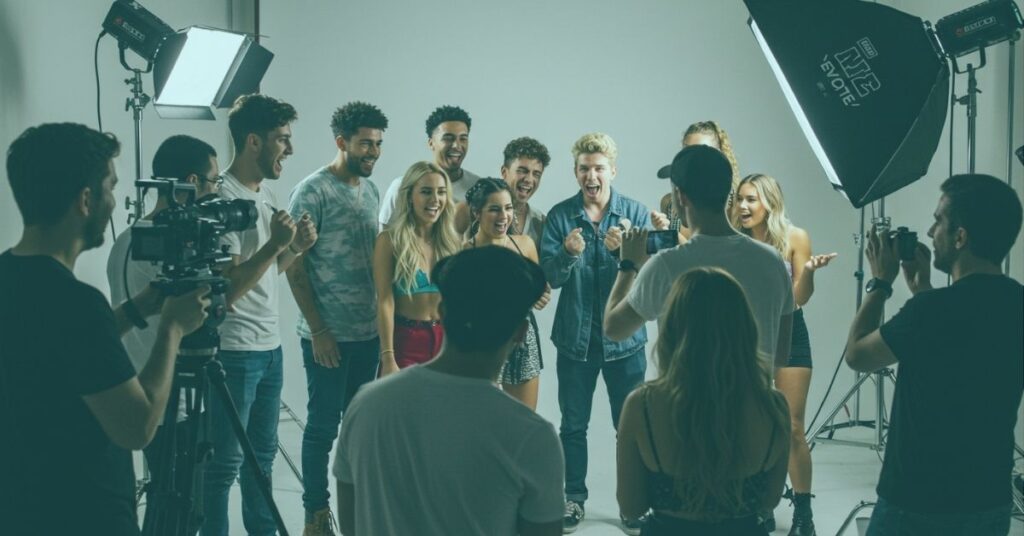
The Hidden Pressure to Stay Relevant
Influencers live under constant scrutiny. Unlike traditional celebrities, they’re expected to post regularly, respond to fans, stay on trend, and never “log off.” This unending grind creates intense psychological pressure.
Many who seem to “go wild” on camera are actually cracking under the weight of unrealistic expectations. What appears to be drama is often desperation — the last attempt to stay seen in a saturated space.
Burnout, Anxiety & the Mental Cost of Fame
Behind every viral post is a creator who might be struggling. Burnout isn’t always visible, but it affects content quality, mood, and decision-making. Anxiety builds when views drop. Sleep becomes rare when relevance is at stake.
The Influencers Gone Wild trend can’t be understood without acknowledging these silent stressors. For many, the wild moments aren’t marketing moves — they’re signs of emotional exhaustion.
Public Persona vs. Private Breakdown
Many influencers present carefully polished personas. But off-screen, they’re fighting battles — relationship problems, health issues, or identity crises. Eventually, this duality collapses.
When private pain spills into public content, the reaction is explosive. Followers either sympathize or criticize — but either way, the influencer’s life changes permanently.
The Business of Going Wild
Controversy = Cash? How Bold Moves Bring Views
Controversy sells. And in the influencer economy, attention equals income. Many viral “wild” moments have unexpectedly boosted followings, opened new opportunities, or driven traffic to personal brands.
While not all creators aim for chaos, some have learned that a controversial moment — if managed well — can turn into a profitable event. That’s why the Influencers Gone Wild pattern often repeats: it pays.
Campaigns, Sponsorships & Viral Marketing
Brands are watching. While mainstream advertisers avoid messy drama, niche brands often jump in. “Edgy” influencers become faces for rebellious products, raw storytelling platforms, or reaction-based campaigns.
This trend shows that the influencer market isn’t just about lifestyle and luxury anymore — it’s also about boldness, unpredictability, and impact.
From Caution to Chaos in the Influencer Economy
Years ago, being an influencer meant playing it safe. Today, it often means taking risks. From unpredictable rants to unfiltered uploads, creators are redefining influence — not by being perfect, but by being impossible to ignore.
The new formula? Stay real. Stay loud. Stay wild — but just enough to stay in the game.
Public Reaction: Supporters vs. Critics
Cancel Culture in the Age of Clicks
When a creator slips, the internet responds immediately. Hashtags, duets, reactions — everything multiplies within hours. However, cancel culture is inconsistent even if it can appear cruel.
Some influencers survive cancellation. Others don’t. The Influencers Gone Wild trend proves that even the most dramatic moments don’t guarantee permanent damage — especially if the influencer owns the narrative.
Fanbase Loyalty: Blind Support or Strategic Defense?
Loyal fans can turn into an influencer’s strongest defense line. They protect, deflect, and sometimes even rewrite the narrative. Whether it’s defending controversial comments or rationalizing outbursts, fan support can mute criticism.
However, blind loyalty can also prevent growth. When influencers are never held accountable, they repeat mistakes — often leading to more chaotic behavior.
Trolls, Hate, and Online Abuse
When drama hits, hate follows. Trolls flood comment sections, fan pages erupt in arguments, and influencers face intense emotional pressure. The line between criticism and cyberbullying gets blurred quickly.
This kind of online hostility is a major reason why many creators spiral. And ironically, the backlash often becomes part of the very Influencers Gone Wild content cycle — a spectacle that feeds itself.
Safety, Legitimacy & User Privacy
As digital platforms grow in popularity, questions around user safety, data protection, and platform legitimacy become increasingly important. While InfluencersGoneWild has attracted considerable attention online, it’s essential to explore whether it’s a secure and trustworthy platform for viewers and content creators alike.
Is InfluencersGoneWild a Legit Platform?
InfluencersGoneWild operates in a somewhat unconventional space — it’s not a mainstream social network, nor a typical fan-based platform. Instead, it acts more like a content discovery and aggregation site, often redirecting users to creator-hosted profiles on third-party platforms.
Here are some observations on its legitimacy:
- No official app or verified ownership: Unlike established social platforms, the site lacks transparency regarding its creators, team, or official business registration.
- Not affiliated with influencers: Most influencers featured are not directly partnered with the site, which raises concerns around unauthorized listings.
- Used widely by online communities: Despite its informal setup, it’s been widely shared on forums like Reddit, and visited by thousands of users daily.
Conclusion: While the platform functions and is frequently accessed, it lacks the transparency and structure typically found in fully verified and professionally-run sites — which may make it “functionally legit,” but not officially verified.
Security Measures and User Data Protection
Currently, InfluencersGoneWild has limited visible security features, especially when compared to established platforms. Here’s a breakdown of what users should be aware of:
- No mandatory login required: Most content is accessible without signing in, which minimizes the risk of data being stored — but also indicates a lack of personalization or protection.
- No HTTPS encryption in some cases: If a user accesses the site without SSL (https://), data could be vulnerable. Always check for the secure padlock icon in the browser address bar.
- No two-factor authentication (2FA): If account creation is available, it lacks advanced security layers like 2FA, leaving user credentials potentially exposed.
Best Practices:
- Avoid sharing personal details on the site.
- When browsing, use a VPN to conceal IP activities.
- Never enter payment information unless redirected to a trusted third-party site (like a verified creator’s page).
Risks Associated with Using the Site
While many users visit the site purely out of curiosity or entertainment, it’s important to be aware of some potential risks involved:
⚠️ Content Legitimacy Concerns
Some content may be reposted without the original creator’s consent, leading to potential ethical and legal issues. Viewers should be cautious and avoid sharing or downloading such material.
⚠️ Pop-ups and Ads
The site may include third-party pop-ups or aggressive ads — which could redirect users to unverified pages or download prompts. This can increase the risk of malware or phishing attempts.
⚠️ Lack of Content Moderation
Unlike curated social platforms, InfluencersGoneWild has minimal moderation, which may result in:
- Inaccurate or misleading listings
- Misuse of creator identities
- Exposure to inappropriate or misleading content
⚠️ Privacy Vulnerabilities
Because the platform does not ask for much user information, it may feel safe — but tracking cookies or third-party scripts can still collect browsing behavior, especially if proper browser protection isn’t enabled.
Legal & Ethical Implications
When Going Viral Crosses a Legal Line
In the age of viral content, a single mistake can lead to more than just backlash — it can lead to courtrooms. Some influencer moments start as spontaneous outbursts but end in serious legal trouble. Defamation, copyright infringement, and privacy violations are becoming common risks in the world of online fame.
When boundaries are pushed too far, the internet doesn’t just watch — it reacts, and sometimes with lawyers involved.
Content Ownership & Digital Rights
Posting content online doesn’t always mean you own it entirely. Once shared, videos and clips are often reuploaded, edited, or taken out of context. This raises major concerns about content control — especially when a chaotic moment goes viral without consent.
Influencers must understand where platform rights end and creator ownership begins. The rules aren’t always clear, and that can lead to disputes.
Platform Guidelines and Community Rules
Each platform — whether YouTube, Instagram, or TikTok — has strict rules. But their enforcement can feel inconsistent. While some influencers appear unaffected by far harsher behavior, others lose money over small transgressions.
Those who flirt with controversy often walk a fine line. One emotional upload might boost engagement — but it could also lead to takedowns, bans, or strikes depending on the platform’s reaction.
📱 Mobile and Cross-Platform Access
With increasing mobile usage around the world, it’s essential to understand how InfluencersGoneWild performs across different platforms. Whether you’re on your phone, tablet, or desktop, a smooth and secure user experience matters.
Is There an App Available?
As of now, InfluencersGoneWild does not offer an official mobile app on the App Store or Google Play. All content is accessible through the web browser version of the platform. This means users must rely on mobile Safari, Chrome, Firefox, or other browsers to access the site on smartphones or tablets.
It’s worth noting that some third-party websites or ads might falsely claim to offer an app — users should be cautious and avoid downloading unofficial applications, as they could pose privacy or security risks.
Performance on iOS, Android, and Desktop
The web-based version of InfluencersGoneWild is compatible across all major devices including:
- iOS (iPhone/iPad): The site loads smoothly on Safari and Chrome, though pop-ups may be more intrusive on smaller screens.
- Android Devices: Browsing experience is similar to iOS, with good responsiveness, but ad-blockers are recommended.
- Desktop (Windows/Mac): Desktop usage offers the best experience with full-page layouts, better filtering tools, and easier navigation.
In general, the platform performs well if you have a stable internet connection, but it’s advisable to use browsers with ad-blockers for a cleaner experience — especially on mobile.
Mobile Features vs. Web Features
Since InfluencersGoneWild doesn’t have a native app, both mobile and desktop users rely on the same core site. However, some differences in experience do exist:
| Feature | Mobile | Desktop |
|---|---|---|
| Page Navigation | Slightly limited due to screen size | Full menu visibility |
| Ad Intrusiveness | Higher | Lower (with browser extensions) |
| Load Speed | Moderate (depends on device/browser) | Generally faster |
| Bookmarking/History | Browser-dependent | Easier to manage |
While mobile users can access everything, the desktop version remains more user-friendly, especially for longer browsing sessions.
Influencer Redemption Arcs
From Scandal to Success: Rebuilding a Public Image
Online audiences can be harsh — but they also love a good comeback. Many creators have been able to rise from controversy, reshape their image, and reconnect with their audience. What matters most is how they respond after a fall.
An emotional moment may damage an influencer’s reputation temporarily, but with time, honesty, and smart strategy, they can often bounce back stronger.
Apologies, Rebrands & Comebacks
A genuine apology is powerful — especially when followed by change. Many influencers pivot their content, shift focus, or even leave platforms temporarily to rebuild trust.
Instead of ignoring criticism, successful creators acknowledge their missteps, adapt, and re-engage their community with a more mindful approach.
What Makes an Influencer Redeemable?
The difference between a comeback and a cancellation often lies in transparency. If followers believe the creator is learning and improving, redemption is possible. But if apologies seem fake or defensive, support quickly fades.
Those who manage to recover do so with clarity, accountability, and often, a completely new tone in their content.
The Role of Media & Gossip Pages
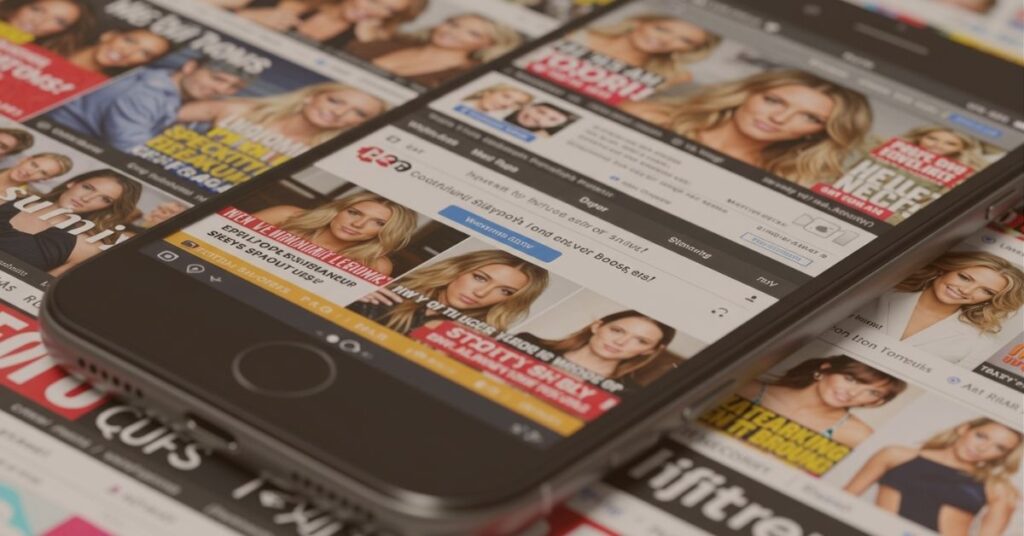
How Blogs, Subreddits & Commentary Channels Fuel the Fire
As soon as an influencer’s moment starts trending, media pages jump in. Blogs, fan forums, reaction YouTubers — all contribute to amplifying the story. The original clip may be 30 seconds, but the commentary can last for weeks.
Sometimes these outlets uncover new details, but often they spin narratives that go far beyond the facts.
Internet Drama: Engineered or Organic?
Not every dramatic moment is accidental. Some influencers have mastered the formula: stir controversy, get attention, then profit from the wave. While some incidents are genuine mistakes, others are carefully crafted for maximum exposure.
This is why certain Influencers Gone Wild stories feel too perfectly timed — because sometimes, they are.
The Media’s Love Affair with Online Scandals
Clicks drive content. That’s why influencer drama often dominates headlines across digital media. These stories offer a mix of fame, emotion, and chaos — all the ingredients for high engagement.
While some platforms aim to inform, many simply feed the hype. And that hype can permanently shape how an influencer is remembered.
Cultural Reactions to “Gone Wild” Trends
Global Lens: Different Societies, Different Standards
Every culture views influencer behavior differently. What might be considered bold and entertaining in one region may be offensive or even banned in another. The rise of bold content — often linked to the Influencers Gone Wild trend — reveals how cultural context shapes online tolerance.
For instance, in some parts of Europe, personal freedom in content is encouraged, while in others — especially in more conservative societies — even mild controversy can lead to widespread backlash or legal action.
East vs. West: Tolerance, Taboo & Cultural Shock
Western platforms often celebrate unfiltered content as “real” and “relatable,” even when it borders on chaotic. Meanwhile, Eastern audiences tend to value restraint, subtlety, and discipline in public figures. When global influencers go viral for controversial actions, the reactions differ wildly.
A video that trends as empowering in the U.S. might be condemned as disrespectful in East Asia. This cross-cultural divide makes the Influencers Gone Wild phenomenon both fascinating and polarizing on a global scale.
International Influencers in the Spotlight
The digital stage is now international. As influencers from Brazil, Japan, Korea, India, and the Middle East grow in popularity, they face double pressure: global visibility with local accountability. Their every move is judged through multiple lenses — cultural, political, and moral.
When an international creator “goes wild,” the impact is multiplied — not just on their audience but on how entire regions are perceived online.
Technology, Leaks & Accidental Fame
How Screenshots, DMs & Stories Go Public
In the world of instant messaging, disappearing stories, and live videos, nothing is ever truly private. Screenshots, leaked chats, and hacked accounts have turned many private moments into public meltdowns. This is a major reason why some influencers unexpectedly land in the Influencers Gone Wild category — not by intention, but through exposure.
Even deleted posts can be preserved and reshared within minutes. One slip can go viral globally before the influencer even realizes the damage.
From Private Moments to Public Conversations
Sometimes, what starts as a private expression — a direct message, a late-night tweet, or a venting story — becomes a topic of mass conversation. These moments gain traction not just because of what was said, but because of how unexpectedly public they became.
Once shared, they take on a life of their own, debated by fans, critics, and media alike.
Managing Digital Footprints in a Viral World
In the current landscape, digital footprints are permanent. Every comment, post, or story can be screenshotted and used out of context — even years later. Influencers must now think not just in real-time, but long-term. One moment of carelessness can shape public opinion forever.
This is why more creators are investing in social media management tools and crisis response strategies — not just to grow, but to survive in a viral world.
When Influencers Set the Trend
Are Gone Wild Moments Being Planned?
Not all chaotic moments are accidents. To increase interaction, some influencers now plan and stage their “meltdowns.” A staged breakup, a fake argument, or a risky upload can spark weeks of attention. What used to be shocking is now often strategic.
The Influencers Gone Wild phenomenon isn’t always raw emotion — sometimes, it’s intentional virality disguised as spontaneity.
The Trend of Unfiltered Challenges and Risky Posts
From “no filter” confessionals to oversharing trends, social media has moved toward a new kind of authenticity — one that sometimes borders on recklessness. Challenges that encourage users to “be real” have pushed creators to reveal more than ever before.
While many fans love this openness, others question whether it’s healthy — or just another performance style.
Rewarding Shock: Is It Strategy or Self-Expression?
There’s a growing debate online: are these moments a true reflection of influencers being themselves — or simply content strategy? Some creators argue they’re just expressing their raw selves. Others admit they post wild content because that’s what gets rewarded.
In either case, it’s clear: shock sells. And whether it’s planned or impulsive, the algorithm loves unpredictability — a big reason the Influencers Gone Wild trend continues to thrive.
The Influence on Younger Creators
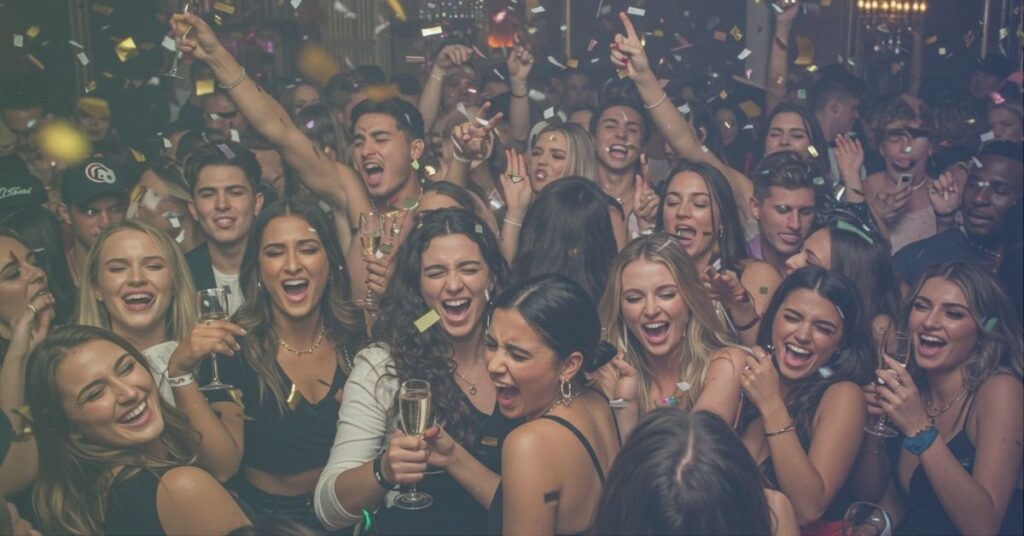
Gen Z & Alpha: Growing Up Watching Chaos
Today’s youngest generations — Gen Z and Alpha — are growing up in a digital world where chaos is content. Dramatic scenes, contentious livestreams, and emotional breakdowns abound in their social media accounts. For them, viral behavior isn’t shocking — it’s familiar.
They’ve watched countless Influencers Gone Wild clips not as isolated incidents, but as part of everyday entertainment. This shift is redefining how the next wave of creators views success, authenticity, and attention.
Aspiring Creators Mimicking the “Gone Wild” Formula
When wild content leads to rapid fame, younger creators start copying the formula. They see unfiltered rants, breakdowns, or viral drama as shortcuts to visibility. While many don’t fully understand the risks, they learn quickly that controversy equals reach.
This isn’t just mimicry — it’s cultural conditioning. New creators often assume that unless their content is emotionally extreme or chaotic, it won’t perform.
Role Models or Red Flags?
There’s a fine line between inspiration and harm. Influencers who show vulnerability can help others feel seen, but when those moments are rewarded with likes and sponsorships, it sends a different message: chaos is profitable.
Parents, educators, and platforms now face the challenge of guiding young audiences in understanding what’s real, what’s performative, and what’s dangerous to imitate.
Mental Health in the Influencer Age
Coping with Fame, Criticism & Exposure
Although the lifestyle of an influencer may appear luxurious, there is a great deal of pressure behind the scenes. Constant attention, public judgment, and the need to stay relevant 24/7 can erode mental well-being. Anxiety, imposter syndrome, and emotional exhaustion are incredibly common — even among top-tier creators.
Some of the most viral Influencers Gone Wild moments stem from mental burnout rather than media strategy — and that reality needs more recognition.
The Cost of Constant Connection
Being always online means being constantly exposed. Every comment, every reaction, every post is under scrutiny. Even small missteps can snowball into large-scale backlash, especially when audiences expect influencers to be “on” all the time.
The pressure to keep engaging — even when creators are struggling — is one of the harshest realities of online fame.
Online Fame Without a Break Button
Unlike traditional celebrities, influencers rarely get to step back. Their brand is their personality, and their work is tied to their presence. Taking a break can mean losing followers, momentum, and income — making it feel impossible to unplug.
The industry desperately needs conversations around boundaries, sustainable growth, and mental wellness over metrics.
The Algorithm Effect
How “Wild” Content Gets Boosted
The goal of social media algorithms is to encourage interaction, and nothing attracts attention more than uncertainty. Emotional rants, controversial takes, and dramatic twists get shared faster and more widely than polished, thoughtful content.
This means platforms often reward the very behaviors associated with the Influencers Gone Wild trend, whether or not that’s intentional.
Platform Bias Toward Drama, Emotion, and Conflict
Whether it’s YouTube’s recommendations, TikTok’s For You page, or Instagram’s Explore tab, all are wired to boost what gets clicks — and drama drives clicks. As a result, influencers who stir controversy often appear more frequently on feeds than those who stay calm and collected.
It’s not just about who shouts the loudest — it’s about who triggers the most reaction, even if that reaction is outrage.
Creators vs. Code: Who’s Really in Control?
The more influencers understand the algorithm, the more they shape content around it. But that comes at a cost — many feel they’re no longer creating for their community, but performing for the machine.
It raises a deeper question: are influencers going wild… or are algorithms pushing them to?
Influencers Gone Wild & Brand Partnerships
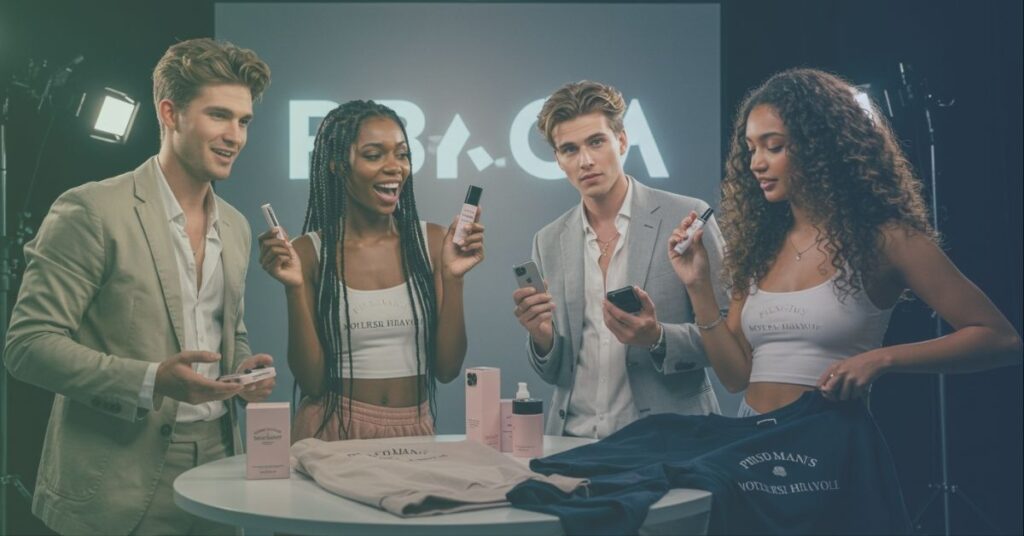
Do Brands Cut Ties or Cash In?
Brands used to distance themselves from controversy — but that’s changing. In some cases, brands cut ties when influencers face backlash. In others, they see controversy as an opportunity to ride the wave of attention.
It all depends on timing, audience sentiment, and whether the influencer is still seen as “valuable.” Some Influencers Gone Wild incidents have led to canceled deals. Others? Even bigger contracts — because the exposure was simply too massive to ignore.
Reputation Management in PR-Heavy Campaigns
Brands today work with influencer managers and PR strategists to monitor public sentiment in real time. If an influencer goes off-script, the brand’s reputation could be at stake — but with the right spin, even drama can be reshaped into a “raw and real” narrative.
This creates a weird dynamic: risk becomes part of the strategy. And when managed well, it can still drive sales.
The Double Standard in Sponsored Culture
Not all influencers are treated equally. Some get dropped for small controversies, while others — often with bigger followings — walk away untouched. This double standard is frustrating for creators and confusing for audiences.
The boundary between offensive and acceptable is ever-changing. And the Influencers Gone Wild trend shows just how unpredictable brand loyalty can be when business meets chaos.
The New Face of Influence: Risk-Takers
How the Wild Persona Is Becoming the Norm
A few years ago, the influencer image was polished and safe. Today, being raw, bold, and even chaotic has become a branding choice. Audiences crave authenticity, even when it’s messy — and creators are leaning into that.
The Influencers Gone Wild mindset isn’t just a trend anymore. It’s becoming part of the mainstream influencer identity.
Being Bold vs. Being Reckless
There’s a fine line between standing out and spiraling out. Some creators push boundaries to make powerful statements. Others just do it for the shock factor.
While bold content can resonate, reckless behavior often backfires. The key is knowing when to stop — and more importantly, when the audience has had enough.
Audience Expectations Are Changing
Today’s viewers want more than just content — they want vulnerability, drama, emotion, and “realness.” But this demand for unfiltered access puts pressure on creators to constantly reveal more.
As wild behavior becomes more normalized, the bar for what’s “viral” keeps rising. For some influencers, staying relevant now means taking bigger risks than ever before.
Can the Trend Be Reversed?
Sustainable Influence in the Digital Age
Is it possible to be successful without going wild? Absolutely. A new generation of creators is proving that it’s still possible to grow by being consistent, thoughtful, and positive. But it takes more time, and doesn’t always get the same immediate attention.
Sustainable influence is about long-term value — not just momentary fame.
Creators Leading by Example
Some influencers are actively rejecting chaos. They focus on healthy habits, transparent communication, and honest storytelling — without crossing ethical or emotional boundaries. These creators are slowly shifting the landscape.
Instead of chasing controversy, they build community. Instead of reacting, they reflect.
Can We Move Beyond Influencers Gone Wild Culture?
Yes — but it requires effort from both creators and audiences. Viewers must stop rewarding reckless behavior with engagement. Platforms must stop boosting shock content blindly. And creators must realize that attention isn’t always worth the cost.
The future of influence doesn’t have to be wild. It can be meaningful, balanced, and lasting — if we choose to make it so.
🔄 Alternatives to InfluencersGoneWild
Whether you’re exploring similar platforms for influencer discovery, exclusive content access, or curiosity, several alternatives to InfluencersGoneWild exist. These platforms vary in purpose, features, and privacy policies — and it’s worth comparing before you commit to any.
Similar Platforms You Can Explore
Here are a few popular alternatives to InfluencersGoneWild:
- Fansly – A subscription-based platform where creators offer exclusive content to paying subscribers.
- Fanvue – Similar to Fansly, focused on a better creator-user experience with built-in promotion tools.
- Linktree – While not content-hosting itself, it’s used by influencers to link out to premium content or private pages.
- Reddit Communities – Many subreddits are dedicated to influencer content sharing and fan discussions.
- Telegram Channels – Some influencers use Telegram to share more direct content with private audiences.
Comparison: Pros and Cons
Let’s evaluate the platforms based on access, content type, and usability:
| Platform | Pros | Cons |
|---|---|---|
| Fansly | Secure, verified creators, subscription-based | Requires account & payment |
| Fanvue | High-quality content, better design | Limited creator base |
| Linktree | Easy access to all creator links | No content hosting |
| Community-based, searchable | Risk of unauthorized content | |
| Telegram | Private sharing, fast access | Limited moderation, no content curation |
| InfluencersGoneWild | Quick previews, no signup needed | No official regulation, content ownership concerns |
Which One Is Best for You?
The “best” platform depends on what you’re looking for:
- If you want official, verified content with proper support — Fansly or Fanvue are good choices.
- If you’re looking for quick discovery and previews — InfluencersGoneWild works best.
- If you prefer community interaction — Reddit offers discussions and trending content.
- For direct updates from influencers — Telegram can be effective, though less secure.
Ultimately, those who prioritize privacy, content legitimacy, and user experience may prefer verified platforms over public aggregators.
Conclusion:
The journey through the Influencers Gone Wild phenomenon reveals more than just viral moments and online drama — it exposes the evolving relationship between creators, audiences, platforms, and culture. What began as occasional outbursts has now become a recognizable pattern, reflecting the pressures, rewards, and contradictions of digital fame.
Influencers today walk a razor-thin line between authenticity and instability, between bold expression and recklessness. Some rise through raw vulnerability; others fall due to missteps caught on camera. And yet, what remains constant is the audience’s insatiable curiosity for what’s real — even if it’s messy.
But not all is chaos. As we’ve seen, a new generation of creators is pushing back against the trend — choosing mindful content, long-term trust, and sustainable influence. These individuals are proof that growth doesn’t have to come from going wild — it can come from going deep, staying grounded, and building something that lasts.
As 2025 unfolds, the question isn’t just who will go viral next — it’s what kind of influence we want to reward. The future isn’t set in stone. It’s in the hands of those who create it… and those who click.
FAQs –
Q1. What does “Influencers Gone Wild” actually mean?
“Influencers Gone Wild” is a term often used to describe moments when online creators behave unpredictably, emotionally, or controversially — whether intentionally or accidentally. These incidents usually go viral and spark widespread attention, criticism, or discussion.
Q2. Are these wild influencer moments staged or real?
Both. Some influencers genuinely lose control due to pressure, burnout, or emotional triggers. Others plan dramatic moments as part of a strategy to increase engagement. It can be challenging to distinguish between the two in today’s content society.
Q3. Why do audiences love this kind of content?
Because it’s raw, emotional, and unpredictable. In an age of polished branding, unfiltered behavior feels more authentic — even if it’s chaotic. Viewers are drawn to vulnerability, conflict, and moments that feel “too real to be scripted.”
Q4. How does this trend affect younger creators?
Younger influencers may feel pressured to mimic these behaviors to gain visibility. Unfortunately, this can lead to unhealthy content strategies, emotional exhaustion, or even harmful self-image. It’s crucial for aspiring creators to focus on healthy, sustainable growth.
Q5. Do brands support or reject influencers who “go wild”?
It depends. Some brands immediately cut ties to protect their image. Others lean into the moment, especially if the influencer remains popular. The reaction often depends on the brand’s values, the influencer’s audience, and how the situation is handled publicly.
Q6. Can the “Influencers Gone Wild” trend be reversed?
Yes — but it requires a shift in both creator behavior and audience expectations. If platforms prioritize meaningful content and viewers reward stability over chaos, the culture will gradually evolve. Many influencers are already leading by example.
Q7. Is this just a social media phase or something bigger?
It’s more than a phase. The Influencers Gone Wild trend reflects broader changes in how people relate to fame, mental health, and content consumption. It’s a cultural mirror — showing what the digital world values, tolerates, and monetizes.
